(Joel X. Thomas has been a lifelong musician, performer, and recording artist. He is also a regular contributor to the jonestown report. His other investigative articles in this edition are The Jonestown Express, November 17, 1978: Life on the Eve of Tragedy, The Jonestown Radio Tower (It’s not what you think), and Mystery of Q042 Death Tape Unspooled. He is also the author of The Most Recent Jonestown Book Cannot Be the Last. His complete collection of articles for this site is here. He can be reached at joelxthomas@hotmail.com.)
(Editor’s notes: The clarity of all the pictures in the essay below improves greatly by clicking on the individual images.
(Joel X. Thomas has been a life long musician, performer, and recording artist. He is both a composer, sound technician, and audio engineer, as well as a certified scuba instructor. His knowledge of the equipment used in both studio and live performances has found a particular niche in understanding some of the nuances that are inherent in the tapes of Jonestown. His collected writings for this site may be found here. He may be reached at joelxthomas@hotmail.com.)
The Q042 Death Tape, recorded during the final hours of Peoples Temple’s life on November 18, 1978, is one of the most analyzed and controversial artifacts of Jonestown. Before we can understand how it was made, we need to examine what the community had in the way of recording equipment – including its microphones and mixers – as well as the broadcast speakers present in Jonestown. This companion article specifically addresses how these systems were used in the creation of the Death Tape.
First we need to discuss the three separate sound systems at Jonestown: The Camp PA, The Pavilion PA, and The Band PA.
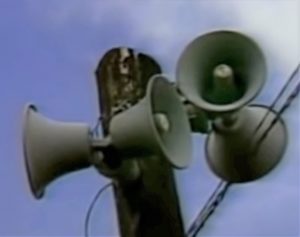
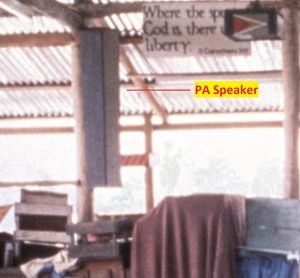
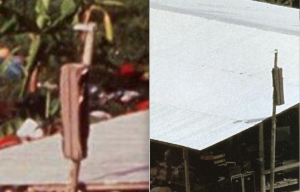

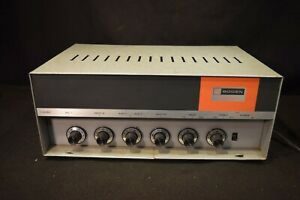
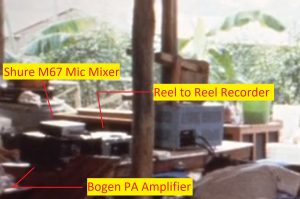
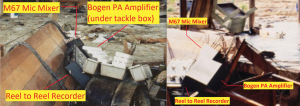

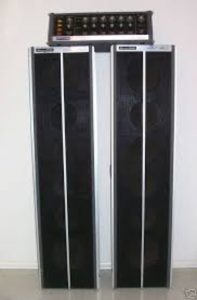
The Band PA was yet a third system used during musical performances of the “Jonestown Express.” It consisted of a Shure Vocal Master model VA 302-C Console PA (Figures 10 and 11) with two speaker columns (Figure 12). This unmistakably recognizable PA system is considered a classic of the 1970’s. It appears in numerous movies from the period, such as the “battle of the bands contest” scene in the 1978 movie Cheech & Chong’s Up in Smoke, and in the 1987 film The Running Man, starring Arnold Schwarzenegger. It also made up part of the audio arsenal employed by the Beatles when they played before 55,000 screaming fans at Shea Stadium in New York City on August 15, 1965.
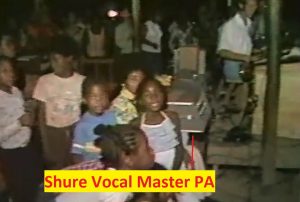
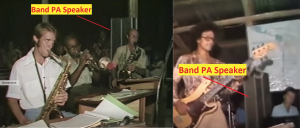
This Band PA was necessary so that the speakers could be placed behind the band to monitor the singer’s vocals during performance. Using the Pavilion PA system for musical stage shows would have made it impossible for anyone onstage to hear the vocals. Many other Jonestown recordings of musical performances were made using this setup via a direct audio line from the Vocal Master to a recorder, which resulted in only the vocals being recorded to tape.
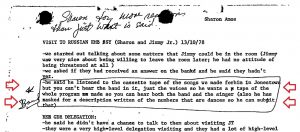
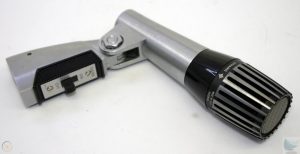
Deanna Wilkinson’s voice – as well as Congressman Ryan’s – were projected through these speakers, as opposed to the normal pavilion PA system. During the November 17 performance, only Deanna’s vocals were plugged into the PA to be amplified. This can be heard in the archive footage: Deanna’s voice gets louder or softer as a function of the location of the camera relative to the proximity of the speakers.
Deanna was singing into a Shure 548S Unidyne IV microphone (Figure 17).
This was the same microphone Congressman Ryan used in his speech to the community with (Figure 18). The microphone was a “unidirectional mic,” which is to say that it only receives audio from a specific direction. It is equipped with a thumb-operated “On/Off” switch on its barrel (Figure 19).
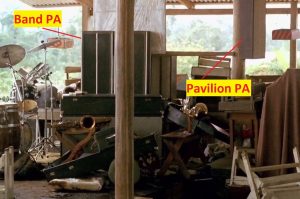
After the November 17 performance, this PA sound system was disassembled and moved to the right side of the stage, where it can be seen on November 18 (Figure 20). The microphones were then reconnected to the pavilion PA through the M67 mixer for Jones’ final address to his followers.
